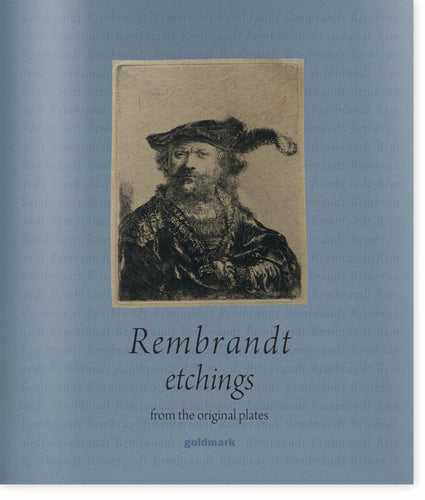Watch this week’s show to find out what’s going on at Goldmark. Learn about the ancient Japanese art of Ikebana with Rie Day and Rembrandt’s exquisite etchings printed from the original plates. Enjoy tea ceremony ware by Ken Matsuzaki and a painting by gallery favourite Andrzej Kuhn. And hear about our forthcoming exhibition featuring paintings by young gallery artist Oliver Bancroft.
Rembrandt
Born in Leiden in 1606, Rembrandt was to become the most important artist of the Dutch Golden Age and, as summed up by Gombrich in The Story of Art, ‘one of the greatest painters who ever lived’. But it is also Rembrandt’s unparalleled skills and achievements as an etcher that has made him a continuous source of inspiration to scholars and collectors alike, as well as a profound influence on many later artists, including Francisco de Goya, James McNeill Whistler and Pablo Picasso. The technical mastery and inventiveness with which Rembrandt made his 300 or so etchings was already recognised in his lifetime and his prints were widely sought after. The very fact that his graphic work could be reproduced meant that it was his etchings, rather than his drawings or paintings, which led to his international reputation at the time.
In spite of his artistic success, Rembrandt was forced to declare bankruptcy in 1656 and his house and possessions were put under auction. Fortunately, Rembrandt's copper etching plates were not amongst the items sold, and for a while their whereabouts were unknown. After Rembrandt’s death in 1669, the first record of the plates appeared in an inventory of his estate created by his friend, the print dealer Clement de Jonghe. The plates then passed through several hands but it wasn’t until the latter half of the 18th century that the first significant posthumous impressions of the existing copperplates were made. This was under the ownership of Parisian dealer Claude Henri Watelet, who was a very skilled etcher himself and was apparently the first to rework some of the plates. It was in 1786 that the Parisian printer and publisher Pierre-Francois Basan acquired around 80 etching plates by Rembrandt from the estate Watelet. The so-called Basan Receuil was first published in 1789 and constituted a landmark not only in the history of Rembrandt scholarship, but also in the development of the academic study of art. For the first time a volume containing an overview of Rembrandt's work printed from his own plates was available to the collecting public. It was, in many respects, the first illustrated catalogue of an artist's work. After Basan died in 1797, his son, Henri Louis Basan, inherited the plates and published further collections of Rembrandt etchings in 1807/8. The H.L. Basan edition seldom appears for sale and we are truly delighted to have acquired this collection.
Ken Matsuzaki
Ken Matsuzaki was born in 1950 in Tokyo. Growing up Matsuzaki’s life was filled with art and culture and his family’s influence began to show when, around the age of 16, Matsuzaki developed an interest in ceramics. In 1972, after graduating from Tamagawa University’s College of Arts, he began a 3 year apprenticeship with (National Living Treasure) Tatsuzo Shimaoka.
Nearing the end of his apprenticeship Matsuzaki asked Shimaoka if he would consider extending it for another 2 years, whilst he learned to develop his own style, and began creating his own motifs and palette of glazes that he would use for the next 15 years. Today, Matsuzaki has exhibited widely in Japan, America and the UK and his work is held in major galleries worldwide.
Andrzej Kuhn
In 1940, when Kuhn was just ten years old, the Russians invaded his native Poland and his father was placed in a camp whilst Kuhn was deported to Kazakhstan with his mother and sister. His mother tried to escape with her family but she was recaptured and died in a prison camp. The children were placed in an orphanage but subsequently their father was released and reunited with them in exile.
The Kuhn family spent several years in refugee camps in Iran, Palestine and Egypt and much of the subject matter and imagery of Kuhn’s paintings seems to originate from that period of his life. He arrived in England in 1947 and won a scholarship to the Chelsea School of Art at the age of twenty-four.
Oliver Bancroft
Born in Cambridge in 1976, Oliver Bancroft is recognised to be one of the outstanding painters of his generation. He has exhibited internationally and over the last two decades has become a feted filmmaker, with selections by Tacita Dean and shown in various venues including the Pompidou, Paris.










